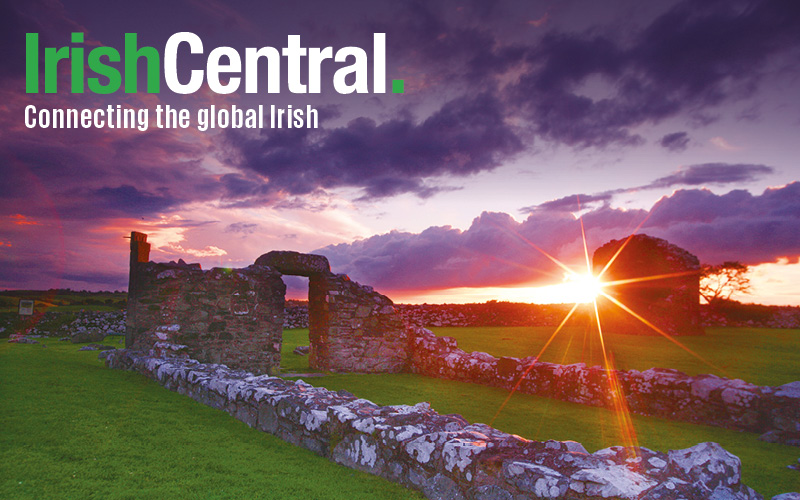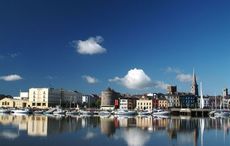Bearing a national passion for the world of sport, Ireland can reverberate to the drums of Gaelic football, hurling, soccer, rugby, horse racing, athletics, boxing and even snooker. Next year will see the sports fan's heart beat to a different pulse when Ireland steps up to the tee for the 2006 Ryder Cup. For three days in September all eyes will turn to the sculpted countryside of Co. Kildare when The K Club in Straffan hosts golf's most prestigious international tournament. Although this marks the 36th contest in the tournament's history, it will be the first time the Ryder Cup will be played in Ireland. Anticipation is building steadily for the event that pits the best of Europe against the best of America for what is usually an intensely competitive series of 28 matches. This time the American team will arrive on the heels of a heavy mauling at the 2004 Ryder Cup at Oakland Hills outside Detroit. Captained by German champion Bernhardt Langer on that occasion, the European team (featuring three Irishmen - Darren Clarke, Padraig Harrington and Paul McGinley) was in unbeatable form, taking the tournament by 18 to 9 points, the largest winning margin ever recorded in the competition. Even in the moment of victory Dubliner Paul McGinley was already relishing a rematch. "Unbelievable, isn't it?" he enthused. "Can you begin to imagine what the atmosphere is going to be like at The K Club in two years' time? It's going to be the greatest occasion golf has ever witnessed - you can bet your life on that!" However, nobody will be taking the Americans lightly, and with newly appointed U.S. team captain Tom Lehman already plotting revenge, enthusiasts around the world expect an absorbing week of golf. "We are going to a place where the Ryder Cup has never been played before," noted Lehman. "It's to be played for the first time ever on Irish soil, which in itself is a great thrill and a great opportunity. The country of Ireland is one of the best, greatest places I have ever been to," he added generously. "When I think of Ireland I think without question of the nicest, most generous, warm-hearted people in the world. And so I look forward to going back there and leading our team to Ireland." His assessment was endorsed by Tiger Woods on a previous visit to the Mount Juliet course when the superstar won the $5.5 million American Express World Golf Championship. "It's great to play in front of galleries that are knowledgeable, and Irish fans certainly know the game," remarked the world champion. "They're not only gracious but they understand the game of golf. They were fantastic. And I think the course is playing absolutely gorgeous. The fairways are perfect. The greens are the best we have putted on all year, including the U.S. majors." But while Tom Lehman is just as diplomatic as his predecessor Hal Sutton, he leads an American team intent on reversing an unwelcome trend. Europe has won four of the last five Ryder Cups, so only outright victory at The K Club would reinstate the U.S. as home of the world's best golfers. And so the scene is set. In fact, the high calibre of the American game has itself changed the nature of the Ryder Cup. When Samuel Ryder, an English merchant, organized the first tournament in 1927, it involved golf professionals from the U.S. and Britain with $10 prize money for each winning player and a modest feast of champagne and chicken sandwiches for all participants. Ireland joined the British team in 1973, but for several years the U.S. team was simply too strong to make the event competitive. The British and Irish team broadened in 1979 to represent all of Europe, and with the addition of top European players the tournament's power base swung away from the Americans. With the exception of Oakland Hills last year, the contest has been dramatically close, to make it one of the most eagerly awaited events on the international sports calendar. The K Club at Straffan is a magnificent parkland course designed by the legendary Arnold Palmer. Ranging across the 330-acre estate of Straffan House, the course opened in 1991, presenting golfers with a spectacular challenge to reach 18 immaculate greens without taking a detour to the scenic hazards of local woods and lakes. Even the modest architect professed some degree of satisfaction with what The K Club has to offer. "We could draw for a hundred years and not come up with as good a vision," remarked Palmer, describing the course as a "tough but fair challenge from the championship markers." Although the origins of golf trace back to Scotland, the game has evolved into a huge attraction in Ireland with the steady development of "golf tourism" contributing a significant stream of visitors from the U.S., Europe and elsewhere. Golf tourism began mainly in Spain and Portugal, where fine weather and an 'open play' policy by golf clubs opened up a new market. Ireland has learned much from this promotional success on the continent. Tourism Ireland provided grants to clubs who would provide an opportunity for visitors to play. According to Jim McGuigan, Executive Vice President for Tourism Ireland in the United States, about 58,000 visitors played the game in Ireland in 1988. Within 15 years that figure had grown to about 250,000 visitors arriving with golf clubs and dreams of a perfect shot or two. Bringing the Ryder Cup to The K Club has given Tourism Ireland a benchmark for promoting the sport, and it is expected that every golf course within a 60-mile radius of Co. Kildare will be booked out next September. At present there are about 440 golf courses in Ireland. Many of the prestige courses are inland, but there are also a high number of links courses (i.e. golf clubs along the coast). In fact Ireland is home to one third of a world total of 151 links courses. Unlike the more predictable surrounds of parkland conditions, the vagaries of onshore winds is a challenge many golfers find irresistible. Arnold Palmer's involvement with The K Club is one of many associations between Irish golf courses and the top names in the sport. International players now enjoy applying their deep knowledge of the game to designing courses. Many leading players have come to Ireland to put their stamp on the game, such as Greg Norman's personal design for the spectacular Doonbeg links in Co. Clare, Jack Nicklaus (Mount Juliet), Colin Montgomerie and Mark O'Meara (both at Carton House, Maynooth), Seve Ballesteros (The Heritage, Portlaoise), Christy O'Connor Jr. (Galway Bay Golf & Country Club), Bernhardt Langer (Portmarnock links), and many more. For golf enthusiasts visiting Ireland there is a remarkable range of high-quality courses on offer, whether the traditional variety - such as Lahinch (Co. Clare), Royal Portrush (Co. Antrim), Rosses Point and Enniscrone (Co. Sligo), Royal County Down in Newcastle, The Old Head of Kinsale and Fota Island (Co. Cork), Ballybunion and Waterville (Co. Kerry), Royal Dublin - or newer attractions like Mount Juliet (Co. Kilkenny) and Druids Glen (Co. Wicklow). Although all of these clubs operate a membership system, they do try to accommodate visitors from abroad. At Lahinch, for example, almost 25,000 non-members get to play the famed course every year. The vast majority of visitors - currently about 80 percent - comes from the U.S. Aside from the well-known courses there are many hidden gems, and some of the lesser known - and less expensive - courses are very accessible. Many are designed to a very high standard. When English champion Nick Faldo visited the Ballyliffin club in Co. Donegal, for example, he was so taken by the Malin Head course that he offered to buy it. The club members felt they liked things the way they were so they declined Faldo's offer, enjoying a rare moment in the spotlight. For now, everything is gearing up for the showdown next September. "The Ryder Cup will be one of the biggest sporting events Ireland has ever had and one of the biggest events in general ever staged there," feels Jim McGuigan, who sees this even as the pinnacle of a wider plan. "We're putting Ireland up there to make us the Number One destination in Europe."




Comments